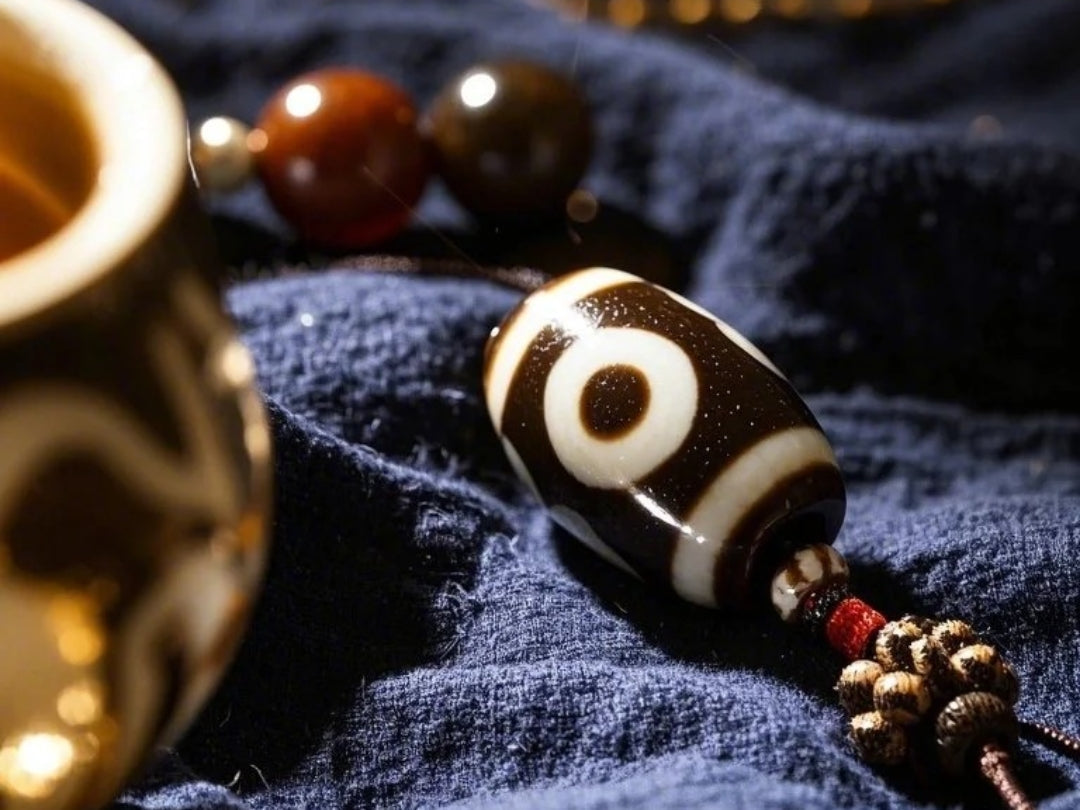Green Tara, one of Tibetan Buddhism’s most beloved figures, is often depicted seated with her right foot extended toward the ground. At first glance, it seems a simple artistic choice—but this posture carries deep meaning both within Tibetan tradition and through the lens of modern psychology. In this post, we’ll explore the significance of Green Tara’s “right foot down” stance and how it aligns with research on open body language and empathy. We’ll also discuss how wearing Green Tara jewelry—especially a Green Tara pendant—can remind us to stay compassionate and ready to assist others.
1. The Tibetan Tradition: Always Ready to Help
In Tibetan iconography, Green Tara (Tibetan: Sgrol-ma) is known as the “Mother of Liberation” and a swift savior from suffering. Her posture—sitting in “lalitasana” (royal ease) with the right leg extended—symbolizes her readiness to rise at a moment’s notice to rescue any being in distress. Key points include:
-
Readiness to Act: By placing her right foot on the earth, Green Tara demonstrates that she never fully settles into meditative stillness. Instead, she remains poised to spring up and assist.
-
Compassion in Motion: The slight forward tilt of her body suggests forward momentum. In Tibetan practice, this reminds devotees that compassion is active: one must be prepared to step off the meditation cushion and address real-world suffering.
-
Bridging Worlds: Green Tara’s left leg remains folded, symbolizing her deep-rooted spiritual wisdom. At the same time, the right leg’s descent into the human realm signifies her bridge between transcendence and compassionate action.
Wearing a Green Tara pendant keeps this teaching close to your heart—literally encouraging you to balance inner wisdom with outward compassion.

2. Open Posture in Western Body Language: Lowering Defenses
Modern psychology has long investigated how body language influences our emotions and social interactions. One consistent finding is that “open” postures—where limbs are extended rather than crossed—tend to reduce psychological defense mechanisms and foster trust. Applied to Green Tara’s pose:
-
“Right Foot Down” as an Open Gesture: In Western body-language research, extending a leg or uncrossing arms signals openness and willingness to connect. When we mirror that posture—e.g., keeping shoulders relaxed and maintaining an open chest—we tend to feel and appear more approachable.
-
Reduced Psychological Barriers: Studies show that people in open postures release less cortisol (the stress hormone) and exhibit lower heart rates when interacting, compared to closed-off stances. Tara’s posture, therefore, visually conveys an invitation: “I am here for you; you can come forward without fear.”
-
Enhancing Empathy: Neuroscience research indicates that open body language can trigger mirror neurons in both observer and model, promoting empathetic resonance. Seeing Tara’s chest open and gaze forward can subconsciously prime our own empathic circuits.
By adorning ourselves with a Green Tara pendant—especially one that accurately depicts her right foot down— we can subtly cue our brains to remain open, lowering our mental defenses when practicing compassion.
3. Modern Meditation Research: Open Posture Boosts Empathy
Recent studies on mindfulness and meditation have begun to integrate body posture as a variable in emotional outcomes. Key findings include:
-
Mindful Posture and Compassion Training: A 2018 study in the Journal of Positive Psychology found that participants who practiced compassion meditation while adopting an open, upright posture reported greater empathic concern and altruistic motivation than those in a slumped or closed posture.
-
Physiological Effects of Open Poses: Researchers at the University of California, San Francisco (UCSF) observed that participants holding an open, expansive stance for two minutes experienced increased vagal tone—a marker of calm, socially engaged states—compared to a control group using neutral posture.
-
Tara-Inspired Practice: When practitioners visualize Green Tara’s posture during guided compassion practices, they often report stronger feelings of readiness and goodwill toward others. The visual cue of her extended leg can serve as a bodily reminder to remain mentally and emotionally receptive.

4. Choosing the Right Green Tara Pendant
If you feel drawn to integrate these insights into your practice, consider the following when selecting a Tara pendant:
-
Authentic Posture
-
Look for pendants where Green Tara’s right foot gracefully drops toward the ground rather than hugging her body. This “lalitasana” depiction strengthens the symbolic message of openness and readiness.
-
-
Quality Materials
-
Sterling Silver or Brass Base: A durable metal ensures the intricate details of Tara’s posture—such as the curve of her leg and the gentle slope of her shoulders— remain clear over time.
-
Natural Gemstone Accents: Many high-quality pendants feature green jade or green aventurine, echoing Tara’s emerald hue and amplifying heart-chakra energy.
-
-
Size and Wearability
-
Subtle vs. Statement: A smaller, 2–3 cm pendant can serve as a personal talisman for daily wear. Larger pieces (3–5 cm) work well as focal points during meditation.
-
Chain or Cord: Consider an adjustable Tibetan silver chain or a natural cord (e.g., silk or cotton) that sits at heart level, aligning the pendant with your heart chakra and reinforcing the compassionate intention.
-
5. Integrating Tara’s Lesson into Daily Life
Wearing a Green Tara pendant is more than an aesthetic choice; it offers continuous psychological and spiritual reinforcement. Try these everyday practices:
-
Morning Intention: Upon putting on the pendant, silently set one clear intention—“May I remain open and ready to help.” The moment you see the pendant in a mirror or feel its weight, remind yourself of Tara’s posture and her vow to assist.
-
Midday Check-In: In a brief break—whether at work or home—hold the pendant and breathe deeply. Visualize your right foot extending forward, releasing any mental barriers that arose in your morning tasks.
-
Evening Reflection: Before bed, reflect on moments when you faced someone in need. Did you pause, hesitate, or step forward? Let Tara’s posture inspire you to step into openness and empathy in tomorrow’s interactions.
6. Beyond Jewelry: Cultivating Lasting Compassion
While Green Tara jewelry keeps this meaningful posture close to your body, true transformation arises when you embody her spirit in action:
-
Volunteer with an Open Heart: Join local food drives, community service efforts, or meditation groups oriented toward compassion. Approach every interaction with the attitude: “I am here for you.”
-
Active Listening: In conversations—whether a friend’s struggles or a stranger’s hardship—maintain an open posture (uncrossed arms, relaxed chest). This signals you are fully present and receptive.
-
Daily Loving-Kindness Practice: Even a five-minute practice of repeating “May all beings be happy; may all beings be free from suffering” can be powerful when accompanied by an open, upright pose.
Green Tara’s “right foot down” stance invites us to transform contemplative wisdom into real-world kindness. As you wear your Green Tara pendant—a small emblem of enormous significance—remember her vow: to rise in service the moment suffering appears. Allow your body language, and your spirit, to reflect that readiness, bridging ancient Tibetan tradition with the latest insights in human psychology.





